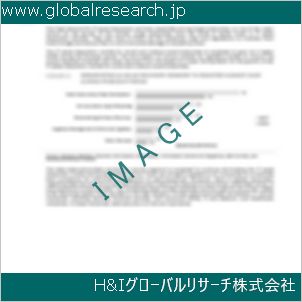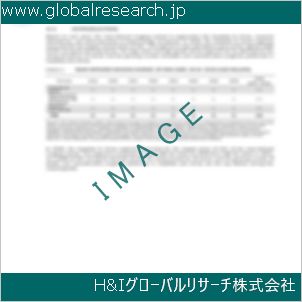Table of Contents
1 Industry Overview of Nickelhydroxide
1.1 Definition and Specifications of Nickelhydroxide
1.1.1 Definition of Nickelhydroxide
1.1.2 Specifications of Nickelhydroxide
1.2 Classification of Nickelhydroxide
1.3 Applications of Nickelhydroxide
1.3.1 Nuclear Application
1.3.2 Non-Nuclear Application
1.4 Industry Chain Structure of Nickelhydroxide
1.5 Industry Overview and Major Regions Status of Nickelhydroxide
1.5.1 Industry Overview of Nickelhydroxide
1.5.2 Global Major Regions Status of Nickelhydroxide
1.6 Industry Policy Analysis of Nickelhydroxide
1.7 Industry News Analysis of Nickelhydroxide
2 Manufacturing Cost Structure Analysis of Nickelhydroxide
2.1 Raw Material Suppliers and Price Analysis of Nickelhydroxide
2.2 Equipment Suppliers and Price Analysis of Nickelhydroxide
2.3 Labor Cost Analysis of Nickelhydroxide
2.4 Other Costs Analysis of Nickelhydroxide
2.5 Manufacturing Cost Structure Analysis of Nickelhydroxide
2.6 Manufacturing Process Analysis of Nickelhydroxide
3 Technical Data and Manufacturing Plants Analysis of Nickelhydroxide
3.1 Capacity and Commercial Production Date of Global Nickelhydroxide Major Manufacturers in 2023
3.2 Manufacturing Plants Distribution of Global Nickelhydroxide Major Manufacturers in 2023
3.3 R&D Status and Technology Source of Global Nickelhydroxide Major Manufacturers in 2023
3.4 Raw Materials Sources Analysis of Global Nickelhydroxide Major Manufacturers in 2023
4 Capacity, Production and Revenue Analysis of Nickelhydroxide by Regions, Types and Manufacturers
4.1 Global Capacity, Production and Revenue of Nickelhydroxide by Regions 2019-2024
4.2 Global and Major Regions Capacity, Production, Revenue and Growth Rate of Nickelhydroxide 2019-2024
4.3 Global Capacity, Production and Revenue of Nickelhydroxide by Types 2019-2024
4.4 Global Capacity, Production and Revenue of Nickelhydroxide by Manufacturers 2019-2024
5 Price, Cost, Gross and Gross Margin Analysis of Nickelhydroxide by Regions, Types and Manufacturers
5.1 Price, Cost, Gross and Gross Margin Analysis of Nickelhydroxide by Regions 2019-2024
5.2 Price, Cost, Gross and Gross Margin Analysis of Nickelhydroxide by Types 2019-2024
5.3 Price, Cost, Gross and Gross Margin Analysis of Nickelhydroxide by Manufacturers 2019-2024
6 Consumption Volume, Consumption Value and Sale Price Analysis of Nickelhydroxide by Regions, Types and Applications
6.1 Global Consumption Volume and Consumption Value of Nickelhydroxide by Regions 2019-2024
6.2 Global and Major Regions Consumption Volume, Consumption Value and Growth Rate of Nickelhydroxide 2019-2024
6.3 Global Consumption Volume and Consumption Value of Nickelhydroxide by Types 2019-2024
6.4 Global Consumption Volume and Consumption Value of Nickelhydroxide by Applications 2019-2024
6.5 Sale Price of Nickelhydroxide by Regions 2019-2024
6.6 Sale Price of Nickelhydroxide by Types 2019-2024
6.7 Sale Price of Nickelhydroxide by Applications 2019-2024
6.8 Market Share Analysis of Nickelhydroxide by Different Sale Price Levels
7 Supply, Import, Export and Consumption Analysis of Nickelhydroxide
7.1 Supply, Consumption and Gap of Nickelhydroxide 2019-2024
7.2 Global Capacity, Production, Price, Cost, Revenue, Supply, Import, Export and Consumption of Nickelhydroxide 2019-2024
7.3 USA Capacity, Production, Price, Cost, Revenue, Supply, Import, Export and Consumption of Nickelhydroxide 2019-2024
7.4 EU Capacity, Production, Price, Cost, Revenue, Supply, Import, Export and Consumption of Nickelhydroxide 2019-2024
7.5 China Capacity, Production, Price, Cost, Revenue, Supply, Import, Export and Consumption of Nickelhydroxide 2019-2024
7.6 Japan Capacity, Production, Price, Cost, Revenue, Supply, Import, Export and Consumption of Nickelhydroxide 2019-2024
8 Major Manufacturers Analysis of Nickelhydroxide
8.1 Manufacturer One
8.1.1 Company Profile
8.1.2 Product Picture and Specifications
8.1.2.1 Type I
8.1.2.2 Type II
8.1.2.3 Type III
8.1.3 Capacity, Production, Price, Cost, Gross and Revenue
8.1.4 Contact Information
8.2 Manufacturer Two
8.2.1 Company Profile
8.2.2 Product Picture and Specifications
8.2.2.1 Type I
8.2.2.2 Type II
8.2.2.3 Type III
8.2.3 Capacity, Production, Price, Cost, Gross and Revenue
8.2.4 Contact Information
8.3 Manufacturer Three
8.3.1 Company Profile
8.3.2 Product Picture and Specifications
8.3.2.1 Type I
8.3.2.2 Type II
8.3.2.3 Type III
8.3.3 Capacity, Production, Price, Cost, Gross and Revenue
8.3.4 Contact Information
8.4 Manufacturer Four
8.4.1 Company Profile
8.4.2 Product Picture and Specifications
8.4.2.1 Type I
8.4.2.2 Type II
8.4.2.3 Type III
8.4.3 Capacity, Production, Price, Cost, Gross and Revenue
8.4.4 Contact Information
8.5 Manufacturer Five
8.5.1 Company Profile
8.5.2 Product Picture and Specifications
8.5.2.1 Type I
8.5.2.2 Type II
8.5.2.3 Type III
8.5.3 Capacity, Production, Price, Cost, Gross and Revenue
8.5.4 Contact Information
…
9 Marketing Trader or Distributor Analysis of Nickelhydroxide
9.1 Marketing Channels Status of Nickelhydroxide
9.2 Traders or Distributors with Contact Information of Nickelhydroxide by Regions
9.3 Ex-work Price, Channel Price and End Buyer Price Analysis of Nickelhydroxide
9.4 Regional Import, Export and Trade Analysis of Nickelhydroxide
10 Industry Chain Analysis of Nickelhydroxide
10.1 Upstream Major Raw Materials Suppliers Analysis of Nickelhydroxide
10.1.1 Major Raw Materials Suppliers with Contact Information Analysis of Nickelhydroxide
10.1.2 Major Raw Materials Suppliers with Supply Volume Analysis of Nickelhydroxide by Regions
10.2 Upstream Major Equipment Suppliers Analysis of Nickelhydroxide
10.2.1 Major Equipment Suppliers with Contact Information Analysis of Nickelhydroxide
10.2.2 Major Equipment Suppliers with Product Pictures Analysis of Nickelhydroxide by Regions
10.3 Downstream Major Consumers Analysis of Nickelhydroxide
10.3.1 Major Consumers with Contact Information Analysis of Nickelhydroxide
10.3.2 Major Consumers with Consumption Volume Analysis of Nickelhydroxide by Regions
10.4 Supply Chain Relationship Analysis of Nickelhydroxide
11 Development Trend of Analysis of Nickelhydroxide
11.1 Capacity, Production and Revenue Forecast of Nickelhydroxide by Regions and Types
11.1.1 Global Capacity, Production and Revenue of Nickelhydroxide by Regions 2024-2029
11.1.2 Global and Major Regions Capacity, Production, Revenue and Growth Rate of Nickelhydroxide 2024-2029
11.1.3 Global Capacity, Production and Revenue of Nickelhydroxide by Types 2024-2029
11.2 Consumption Volume and Consumption Value Forecast of Nickelhydroxide by Regions, Types and Applications
11.2.1 Global Consumption Volume and Consumption Value of Nickelhydroxide by Regions 2024-2029
11.2.2 Global and Major Regions Consumption Volume, Consumption Value and Growth Rate of Nickelhydroxide 2024-2029
11.2.3 Global Consumption Volume and Consumption Value of Nickelhydroxide by Types 2024-2029
11.2.4 Global Consumption Volume and Consumption Value of Nickelhydroxide by Applications 2024-2029
11.3 Supply, Import, Export and Consumption Forecast of Nickelhydroxide
11.3.1 Supply, Consumption and Gap of Nickelhydroxide 2024-2029
11.3.2 Global Capacity, Production, Price, Cost, Revenue, Supply, Import, Export and Consumption of Nickelhydroxide 2024-2029
11.3.3 USA Capacity, Production, Price, Cost, Revenue, Supply, Import, Export and Consumption of Nickelhydroxide 2024-2029
11.3.4 EU Capacity, Production, Price, Cost, Revenue, Supply, Import, Export and Consumption of Nickelhydroxide 2024-2029
11.3.5 China Capacity, Production, Price, Cost, Revenue, Supply, Import, Export and Consumption of Nickelhydroxide 2024-2029
11.3.6 Japan Capacity, Production, Price, Cost, Revenue, Supply, Import, Export and Consumption of Nickelhydroxide 2024-2029
12 New Project Investment Feasibility Analysis of Nickelhydroxide
12.1 New Project SWOT Analysis of Nickelhydroxide
12.2 New Project Investment Feasibility Analysis of Nickelhydroxide
13 Conclusion of the Global Nickelhydroxide (CAS 11113-74-9) Industry 2024 Market Research Report
| ※参考情報 水酸化ニッケル(Nickel hydroxide)は、化学式 Ni(OH)₂ を持つ化合物で、ニッケルに水酸基が結合した形をしています。CAS番号は 11113-74-9 で、様々な産業や研究において重要な役割を果たしています。本物質の特性、種類、用途、関連技術について詳しく説明します。 水酸化ニッケルの定義としては、ニッケルの化合物で、水酸基が結合した形状を持つ緑色の固体物質です。この物質は、水に不溶であり、アルカリ性の環境で安定性が高く、多くの化学反応において触媒や中間体として働くことがあります。 水酸化ニッケルの特徴にはいくつかの重要な性質があります。まず、その化学的安定性です。水酸化ニッケルは、比較的高い熱安定性を示します。また、二つの異なる結晶構造を持つことが知られており、通常612度以上の高温で変化することがあります。さらに、電子が移動しやすい特性があり、これが電気化学的な応用において非常に重要です。この特性によって水酸化ニッケルは、充電池の電極材料としてよく使用されています。 水酸化ニッケルの種類には、主に二つの形態があります。一つは、α-型水酸化ニッケル種で、これは通常、より高い比表面積を持ち、電気化学的特性が優れています。もう一つは、β-型水酸化ニッケルで、これは通常、熱安定性が高く、構造的に強固ですが、電気化学特性はα-型に比べると劣ります。このように、異なる構造を持つことで、多様な用途に応じた特性が備わっています。 水酸化ニッケルの用途は非常に広範囲です。最も一般的な用途は、ニッケル水素電池(NiMH)やニッケルカドミウム電池(NiCd)の電極材料としての使用です。これらの電池は、再充電可能なエネルギー供給源として利用され、自動車や家庭用電化製品など、さまざまな場所で使われています。特に、ニッケル水素電池は、電気自動車やハイブリッド車においても重要な役割を果たしています。 また、水酸化ニッケルは、触媒としての応用もあります。化学反応において、反応速度を加速させるための触媒剤として使用され、特に油類の水素化反応などに高い効果を示します。このような触媒としての機能は、製薬業界や化学肥料の生産においても重要です。 さらに、水酸化ニッケルは、酸化ニッケル(NiO)および他のニッケルベースの物質の合成に利用されることがあります。これにより、陶磁器の着色剤やアモルファス材料としても応用されます。このように、水酸化ニッケルは単独での利用だけでなく、他のニッケル化合物の合成においても重要な役割を果たしています。 近年の研究では、水酸化ニッケルを用いた新しい材料や技術の開発が進められています。例えば、キャパシタや燃料電池の電極材料としての研究が進行中で、これにより、再生可能エネルギーの利用が促進されることが期待されています。また、ナノ材料としての応用も注目されており、ナノサイズの水酸化ニッケルが優れた電気化学的特性を示すことが示されています。 さらに、環境保護の観点から、水酸化ニッケルを使用した持続可能な技術への関心も高まっています。これにより、産業廃棄物の処理やリサイクルプロセスにおいても、ニッケルの再利用が試みられています。 総じて、水酸化ニッケルは、その特性から非常に多様な分野で使用される重要な化合物です。電池や触媒としての利用に加え、新しい技術や材料開発に向けた研究が進むことで、今後もその用途は広がり続けると考えられます。今後の研究と技術発展が期待される分野でもあり、今後の動向に注目が集まります。 |
❖ 免責事項 ❖
http://www.globalresearch.jp/disclaimer












